[Disclaimer: Finding Mandee is reader-supported, if you purchase through links on my site I may earn an affiliate commission at no additional cost to you. As an Amazon Associate, I earn from qualifying purchases.]
Arlington National Cemetery is our nation’s most hallowed grounds. Filled with some of the bravest men and women our country has ever known, memorials to this nation’s greatest tragedies, and steeped in American history so sincere it feels personal.
The cemetery is under the control of the Department of the Army, with Arlington House under the control of the National Park Service. Both administrations have done an excellent job preventing the cheapening of this site into a tourist destination. A daunting task considering more than 3 million visitors come through Arlington every year.
Arlington covers more than 600 acres and contains more than 400,000 graves. Needless to say, there is no way to see all of Arlington in one visit.
Thankfully, every single grave site is photographed and carefully documented. Each grave can be easily located using the cemetery’s website or app.
Before our trip to Arlington, I made a list of notable graves and monuments to see while there.
Section 60: Arlington National CemeteryOn Hallowed Ground: The Story of Arlington National Cemetery
Tomb of the Unknown Soldier
On top of a hill overlooking the nation’s capital sits one of the most famous grave sites in the world. A white marble sarcophagus holds the remains of four unknown soldiers from WWI, WWII, the Korean, and Vietnam Wars.
Millions of visitors come to the Tomb of the Unknown Soldier to pay respect to these unknown heroes and watch the famous Changing of the Guard Ceremony.
It is a time-honored, American tradition that we did not want to miss.

JFK’s Grave and Eternal Flame
One of the most notable graves at Arlington National Cemetery is former President John F. Kennedy. After his assassination in 1963, the President was laid to rest down the hill from the Arlington House overlooking Washington D.C.
JFK is one of two U.S. presidents buried at Arlington, the other is William Howard Taft. Buried next to President Kennedy are his wife, Jacqueline, and his two infant children. His brothers, Robert and Ted Kennedy are buried nearby. There is also a memorial for his older brother Joseph Kennedy, whose remains were never recovered from WWII.
At the head of President Kennedy’s grave is a flat granite stone, from which the eternal flame burns around the clock.
A special apparatus, designed by the Institute of Gas Technology, automatically reignites the flame if ever extinguished by rain or wind. The flame has burned continuously since President Kennedy’s funeral in November 1963 and shall burn until eternity.
It was a definite must-see during our visit to Arlington National Cemetery.
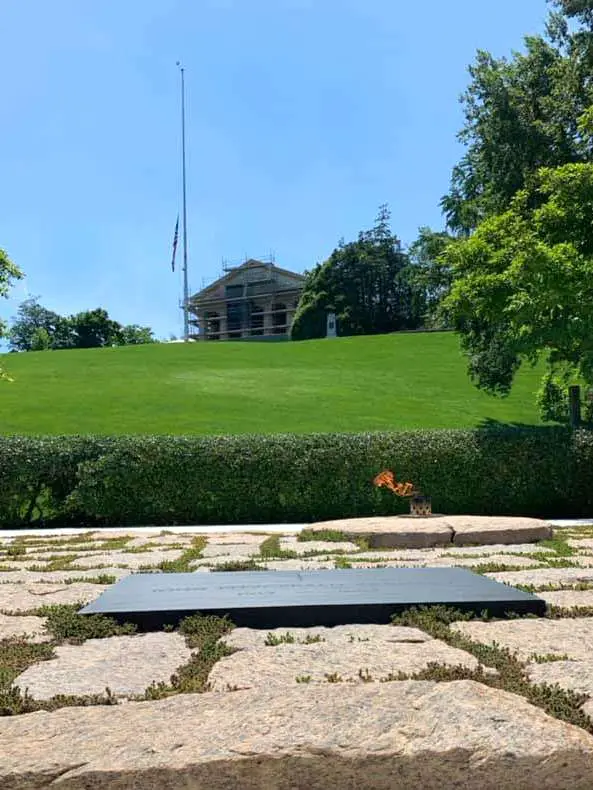
McClellan Gate
McClellan Gate was the main entrance to the cemetery when it opened to the public in 1864.
This brick arch doesn’t seem very spectacular when compared to all of the other marvels in our Capital. But this 30-foot-tall structure, built in the 1860s still stands today and I consider than an impressive feat.
Since we took a tram tour of the cemetery and only had a limited amount of time, we didn’t get off at the gate. However, I did manage to get a picture of it as we drove past.
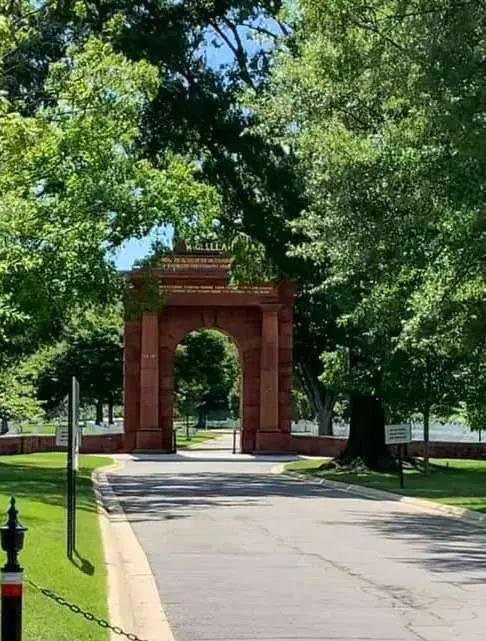
Sacred Duty: A Soldier’s Tour at Arlington National CemeterySentinel: Inside the Sacred Duty
Audie Murphy’s Grave
My dad is a huge fan of old westerns and Audie Murphy starred in many of his favorites. We spent many evenings watching them with him.
However, until I started researching the cemetery before our trip I didn’t realize that Audie Murphy was buried at Arlington. I had no idea that he was one of the most decorated war heroes in American history.
Murphy was a Medal of Honor recipient (the nation’s highest award for gallantry in action) for single-handedly killing 50 German soldiers in one attack, while wounded! Before the war ended, he earned a total of 28 medals, an unparalleled feat at that time.
We didn’t want to miss his grave while we were at Arlington.

Arlington House
The ‘big house’ at Arlington is the nation’s memorial to Confederate Army General Robert E. Lee.
Before Arlington became the nation’s most dignified cemetery, Lee lived there and ran the plantation with his wife, Mary Anna Custis Lee. During the war, the estate, captured by the Union Army, became a headquarters and encampment for Union forces.
Soon, the grounds were appropriated for use as a military cemetery. Not only did this solve the current issue of running out of space in cemeteries in Washington D.C., but would also render the plantation uninhabitable if the Lees ever tried to return.
The Arlington House is a beautiful mansion that sits atop a hill overlooking the Capital. I really wanted to see it during our trip to the Capital, but it was closed for renovations. Make sure you check the NPS website to see if it has re-opened before your visit.

Civil War Unknowns Monument
Near Arlington House, in what was once part of its famous rose garden, there is a memorial to unknown soldiers of the Civil War.
The masonry vault, dedicated in 1866, marks the remains of 2,111 soldiers from both the Union and Confederate Armies. These remains, gathered from the battlefields of Bull Run and the route to the Rappahannock River, rest beneath the monument.
Unfortunately, we didn’t make it to the Civil War Unknowns Monument during our visit but hope to see it next time we’re there.
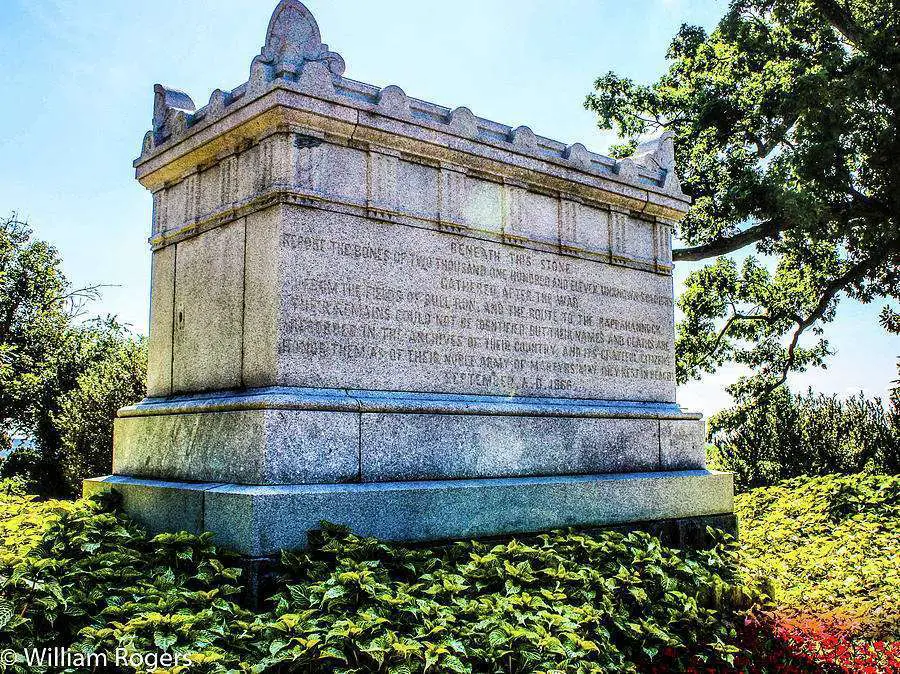
Otto’s Tales: Let’s Visit Arlington National CemeterySection 60: Arlington National Cemetery: Where War Comes Home
Iwo Jima Memorial
Most people know this memorial as the Iwo Jima Statue, but it’s actual name is the United States Marine Corps War Memorial. It is dedicated to all Marines who have fought and died since 1775.
This statue’s design was based on a Pulitzer Prize-winning photo taken during the U.S. invasion of Iwo Jima during WWII. After a battle that lasted more than four days, U.S. forces successfully captured Mount Suribachi. Six exhausted Marines raised an American flag at it’s summit and the famous photo was taken. It soon became one of the most iconic images in American history.
This monument isn’t technically in Arlington National Cemetery. It is located in Arlington Ridge Park, but it’s close enough outside the gates to walk to. Many people take the opportunity to see it during their visit to the cemetery.

Section 27
Section 27 is the oldest section in Arlington National Cemetery and contains many notable graves.
In this section rests nearly 4,000 former slaves and 1,500 U.S. Colored Troops. It is also the site of the first military burial at Arlington. Private William Henry Christman, a black soldier from Pennsylvania became the first service member laid to rest in Arlington in May of 1864.
Due to the heat and the irritability of my tired kids, we decided not to get off the tram at this stop, but I hope we have to opportunity to see it in the future.
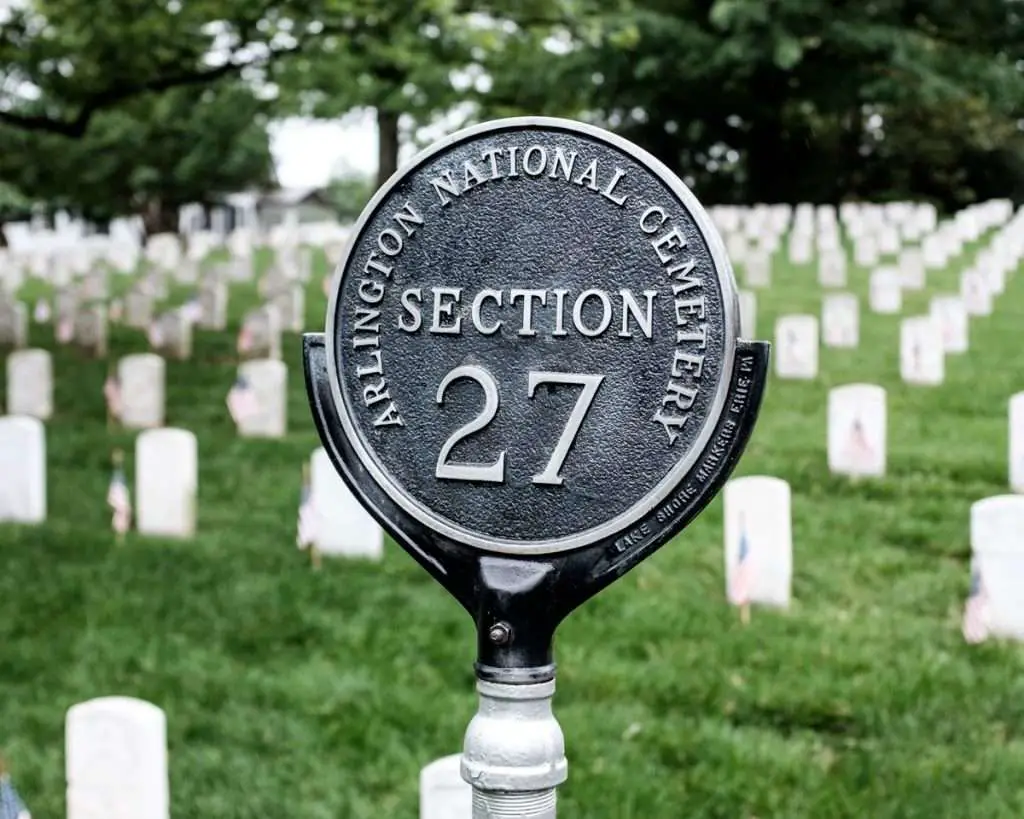
Challenger Memorial
Just seconds after the Space Shuttle Challenger took off in 1986, it exploded, killing all 7 crew members on board. It took nearly 2 months to recover their bodies from the ocean.
Two of those crew members are buried in individual graves at Arlington – Captain Michael Smith and Francis ‘Dick’ Scobee. Unfortunately, the remains of the other 5 crew members were indistinguishable. The families chose to cremate the remains and buried them together in Section 46 of Arlington National Cemetery. A special monument, constructed in their honor, marks the site of their remains.
Although these men and women were not military service members, they are American heroes nonetheless.
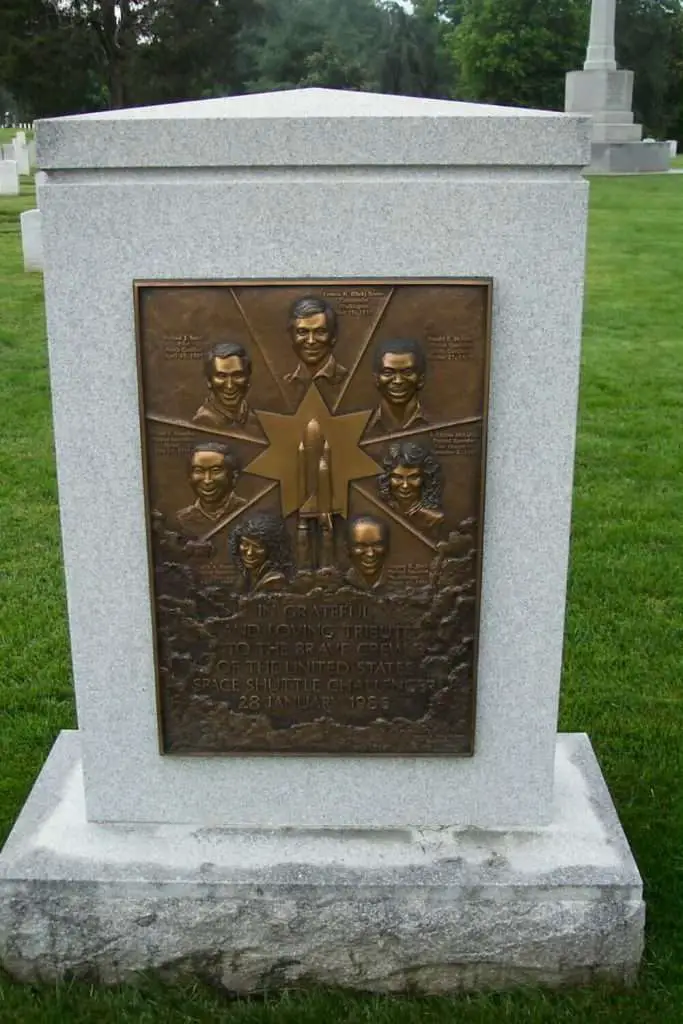
The Unknown Soldier’s Journey Home: From the Battlefields of France to Arlington National CemeteryTwenty-One Steps: Guarding the Tomb of the Unknown Soldier
Niche Wall
Operating for more than 150 years, it’s understandable that Arlington National Cemetery has nearly filled its grounds. More than 400,000 people lay at rest on those hallowed grounds. Still, the cemetery hosts 27-30 funerals every day.
The Department of the Army is trying to keep the cemetery open for new burials for as long as possible. Almost completely surrounded by the local community, there is not much room for expansion. They were able to accommodate more burials by building the Niche Wall or Columbarium, where cremated remains are put to rest.
Inevitably, Arlington will eventually run out of room. However, instead of running out of space in the 2020s as once predicted, cemetery administrators estimate that they will be able to continue active burials until the 2050s thanks to the new Niche Wall.
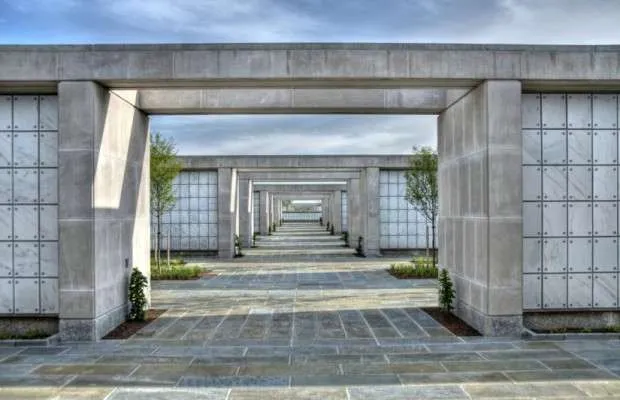
Section 60
Section 60 of Arlington National Cemetery, once called ‘the saddest acre in America’ contains the graves of service members that died in Iraq and Afghanistan.
This particular section is one of the most prominent today since it contains service members from our most recent and ongoing conflict(s). Presidents Bush, Obama, and Trump have all visited this section of the cemetery. Recently, section 60 was featured in an HBO documentary and a National Geographic piece.
We didn’t get the opportunity to visit Section 60 during this visit to Arlington, but it’s definitely one that we won’t miss next time.

9/11 Memorial
On September 11, 2001, 184 people died during the attack on the Pentagon. Of those 184 people, 5 were never recovered. Those families were unable to bury their loved ones and I imagine that closure was difficult.
In response to that tragedy, Arlington erected the Pentagon Memorial and gave a funeral service for all 184 people, with a special emphasis on the 5 that remain unrecovered. This memorial contains the names of all the people who passed away that day in the Pentagon and on Flight 77.
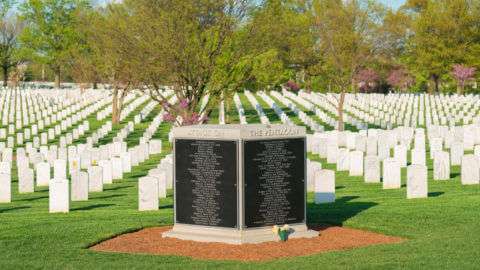
Our visit to Arlington National Cemetery was a bittersweet experience. I am glad that we were able to witness the magnitude of the cost of our freedom, but it was extremely emotional.
We didn’t see many dry eyes in the cemetery that day through the tears in our own. Seeing Arlington National Cemetery was humbling. It felt good to honor and remember those who paid the ultimate price for this land that we love.

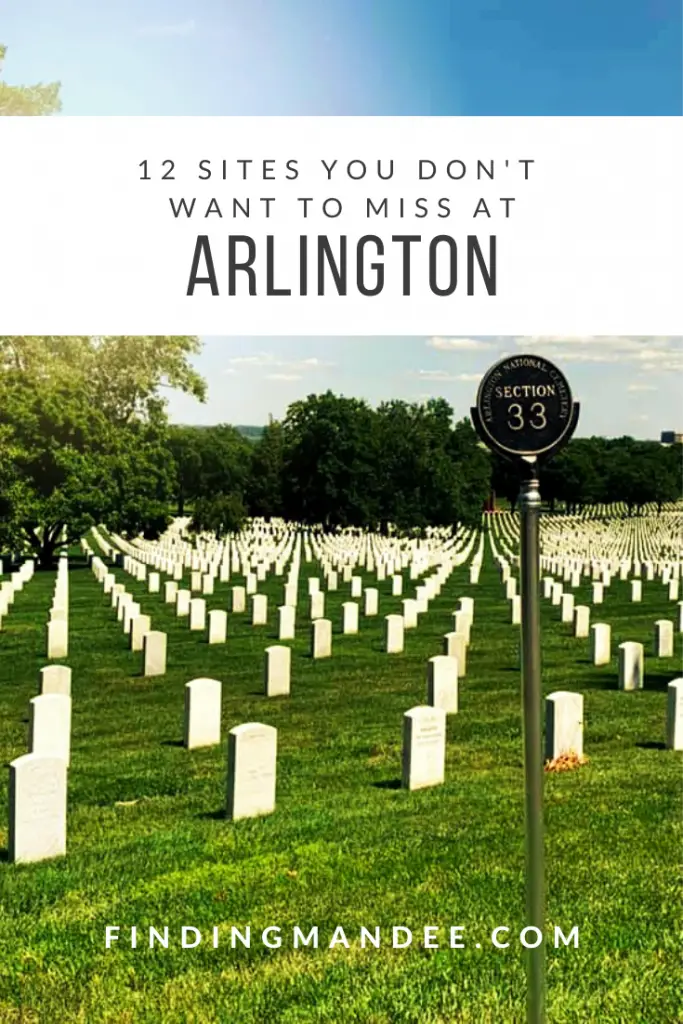
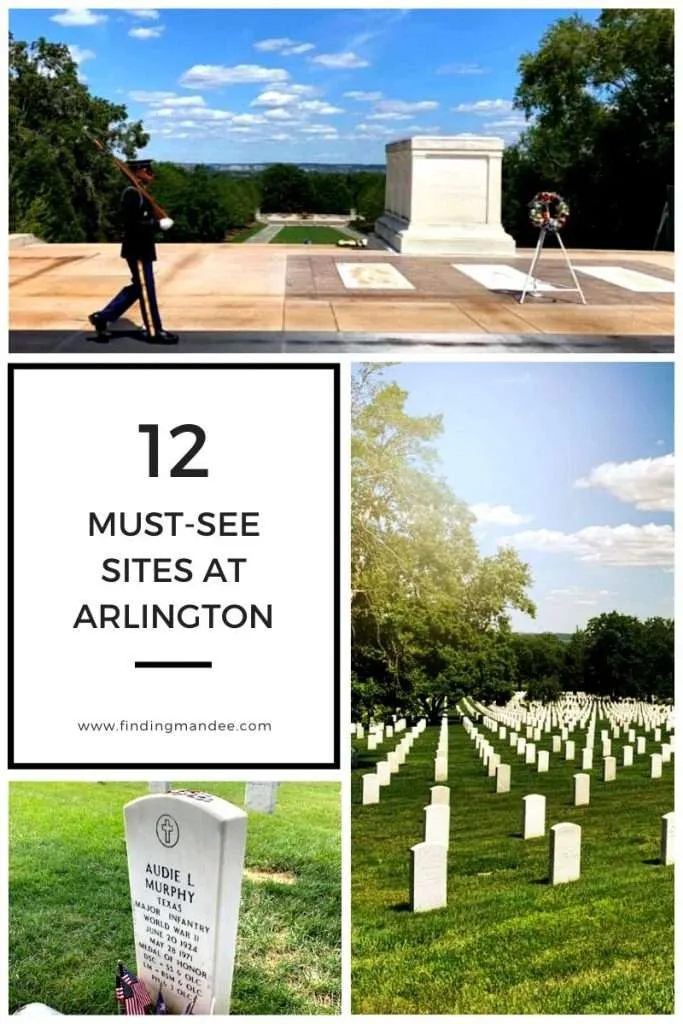
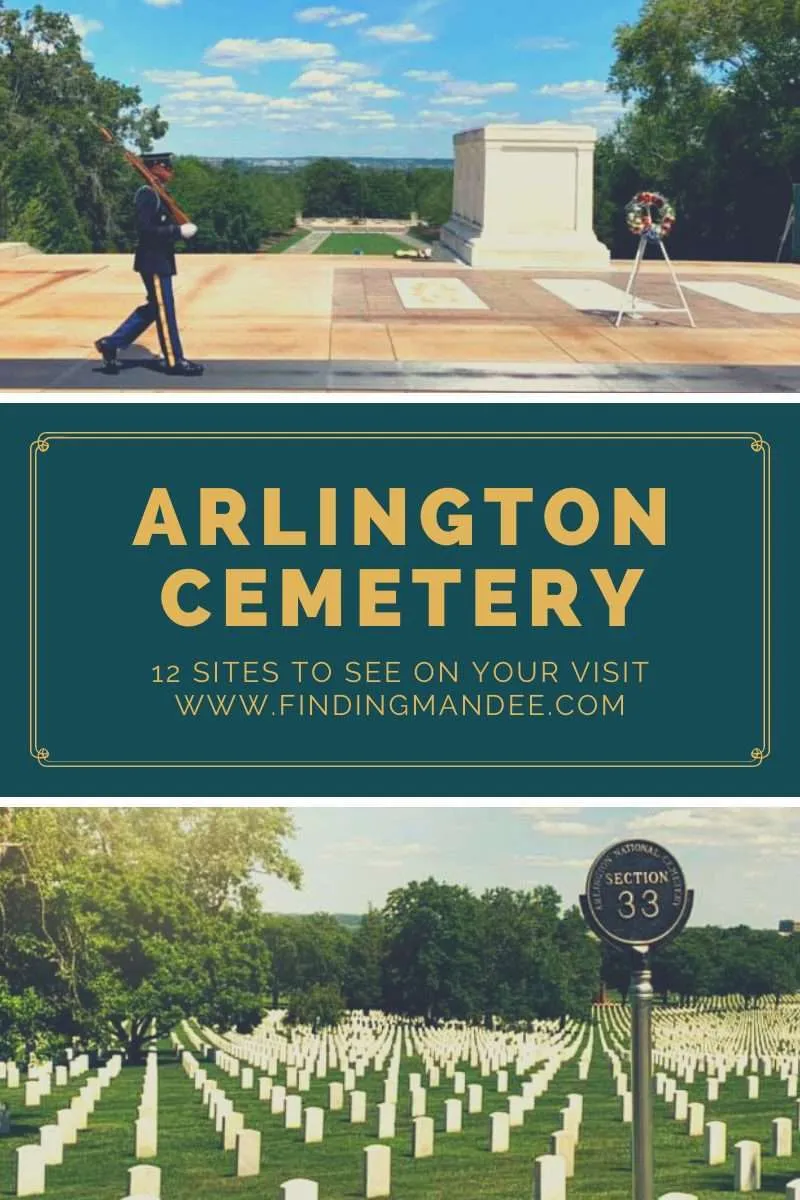
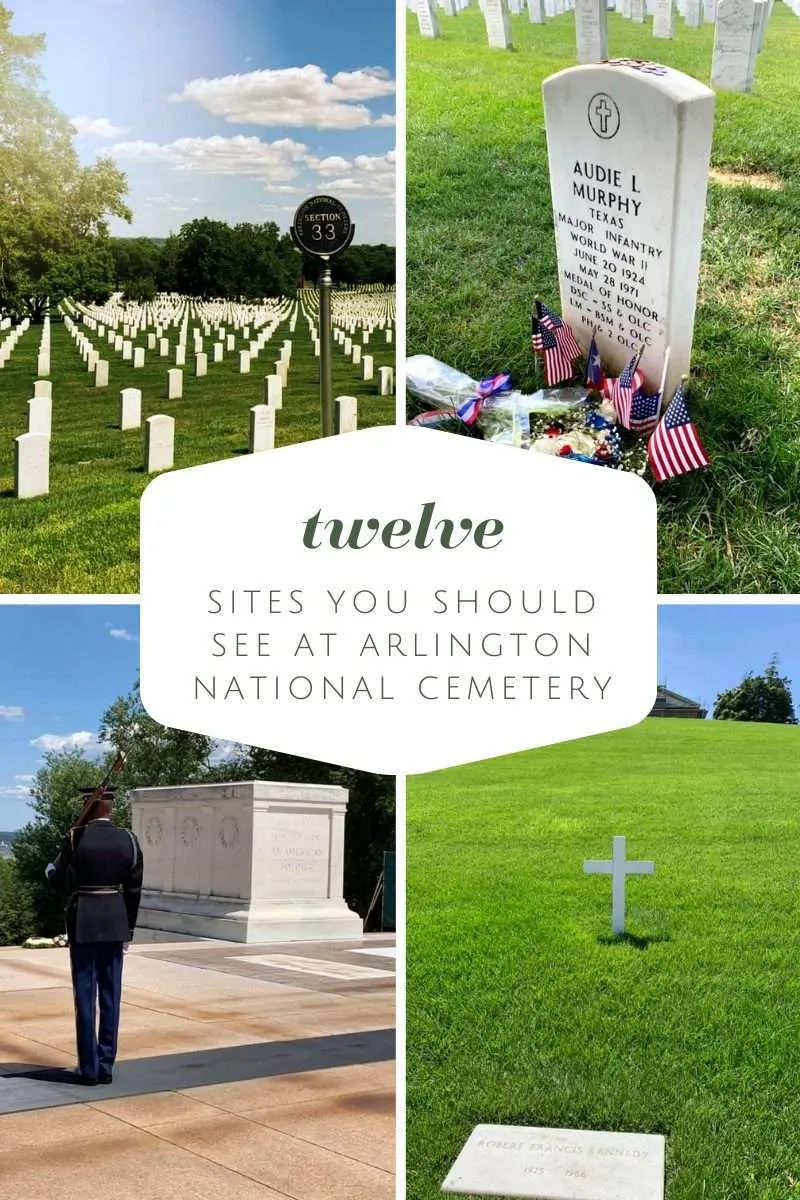
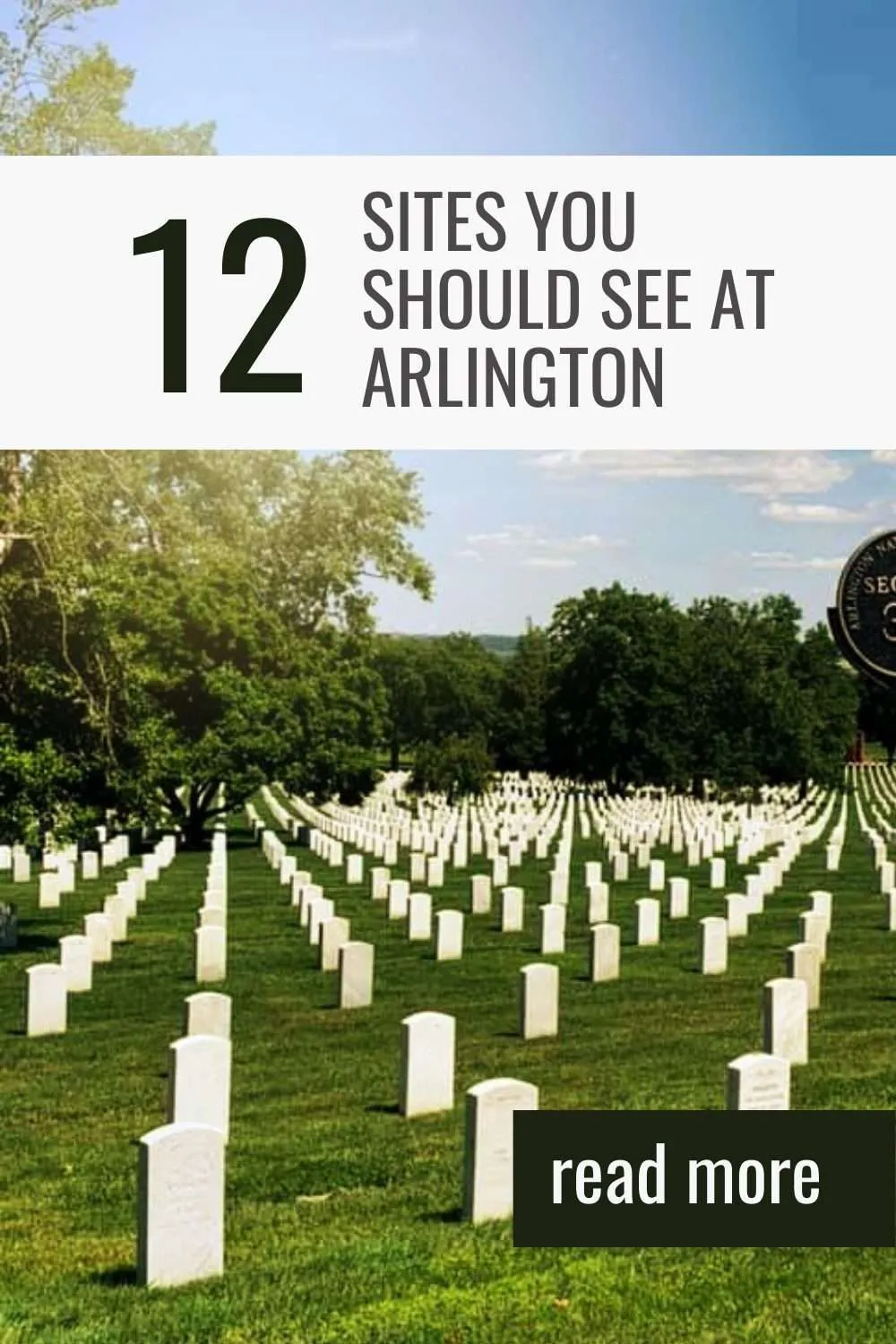

You can see what else we did on our trip to the Capital here:
- How to Find Kilroy at the WWII Memorial
- Seeing the Cherry Blossoms in Washington D.C
- 3 Mistakes You’re Making in Washington D.C….and How to Fix Them!









